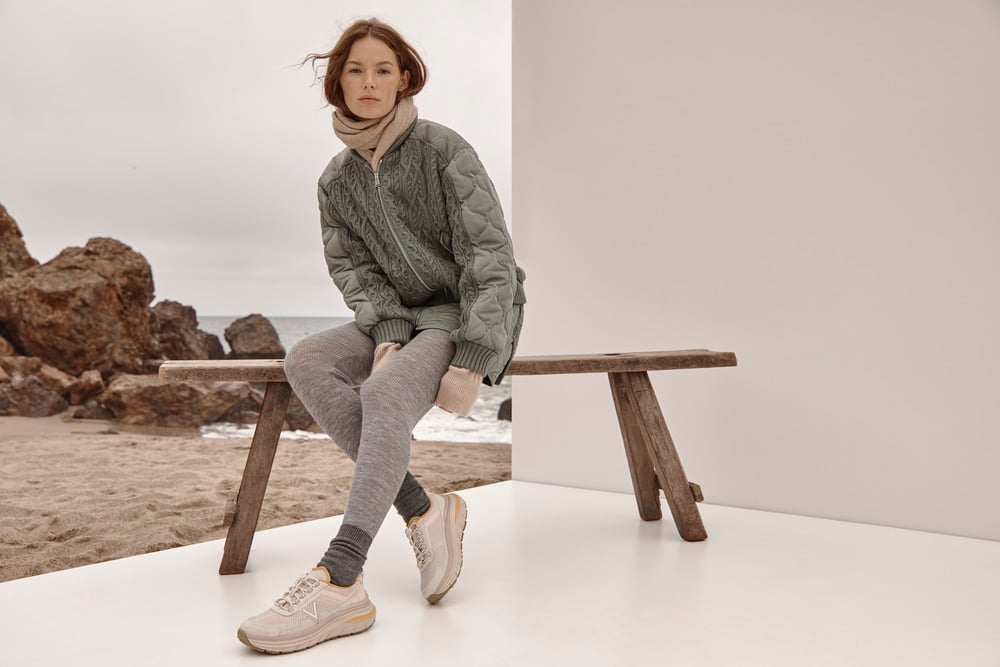
It’s always frustrating to cut a walk short just because your knees are giving you trouble. If your patellar region regularly punishes you during or after a routine stroll, you’ve probably pondered over the question of how to reduce knee pain while walking.
If this sounds like you, we’ve got good news—it’s very likely that your knees are capable of providing better, less painful walking support for you. But before they can do that, you will need to take the first step and be intentional about supporting them.
From proactive measures like proper footwear and physical therapy to reactive remedies that help relieve knee pain when it strikes, read on to learn our recommended strategies for warding off knee pain so you can enjoy long walks without being held back by worries.
Understanding Knee Pain While Walking
Why is knee pain during walking such a common occurrence? After all, many parts of the body are active during this type of movement. So, what causes knee pain, and why are the knees in particular so often a source of ongoing discomfort?
The truth is, your knees carry a large level of responsibility every single time you take a step.
Why?
Because your knee is the pivotal point where your thigh bone, shin bone, and kneecap all come together. This complex region is the biggest joint in the human body, and because it enables your leg to make a bending motion, it’s the core element that makes the action of walking possible.
Like an essential cog in a machine, if something happens to disturb this important joint, your ability to walk comfortably may be entirely disrupted.
Overuse of the knee or accidents that happen while walking can lead to painful conditions such as:
- Bursitis
- Tendinitis
- Torn ligaments
- Torn cartilage
- Strains and sprains
To minimize your risk of experiencing these painful knee issues, it’s crucial to protect, support, and treat your knee joint. Your knees might be MVPs when it comes to walking, but that doesn’t mean they have to do their job without a little assistance.
The Importance of Proper Footwear
If you’re seeking an effective solution to the problem of how to reduce knee pain, the first thing you should look at is your footwear. But have you ever wondered, could finding the best shoes for knee pain make a real difference?
Imagine trying to drive a car with cheap, worn-down tires. The ride wouldn’t be pleasant, and the inadequate support would likely leave the whole of your vehicle much worse for wear.
Your body works in the same way. It’s a delicate machine—and although it can do amazing things, it needs ample support in order to maintain peak performance and longevity.
At Vionic, we’ve designed a line of shoes precisely for the purpose of providing optimal walking support. Trusted by podiatrists and engineered with the help of biomechanics experts, here are our top picks for supportive, stable shoes that can truly walk the walk:
- 23Walk 2.0 Sneaker – A new-and-improved version of one of our most beloved pieces of footwear, this shoe is crafted with an innovative footbed that features Vio Motion technology for unmatched support. Our Vio Motion footbed cushions the foot, provides arch support, and enhances both stability and flexibility.
- Walk Max – Available as the Men’s Walk Max Lace Up Sneaker and Women’s Walk Max Lace Up Sneaker, this shoe beautifully balances maximum cushioning with optimal support and stability. Engineered with lightweight midsole rebound technology, it helps take stress off your body during each walking motion, making a difference your knees can feel.
- Walk Strider – With anti-roll capabilities and lateral rigidity constructs, this shoe provides a stable base for performance walkers who need highly technical footwear. Complete with high rebound cushioning, our Walk Strider provides robust support to the knees, discouraging them from twisting out of place or absorbing too much shock with each step.
- Kearny Platform Lace Up Sneaker – If you’re looking for a shoe that offers superior knee support without sacrificing style, the Kearny may be your perfect match. With a contoured footbed featuring our signature Vio Motion technology, this shoe simultaneously cushions, supports, and stabilizes the foot.
- Uptown Loafer – Equipped with a lightweight, flexible sole that moves and breathes with your foot, this shoe is ready for some serious exploration. With cushioning for shock absorption and a deep heel cup that enhances stability, our Uptown Loafer is engineered to take a heavy burden off your knees.
Much knee pain arises when the crucial knee joint endures prolonged pressure or twists unnaturally out of place during physical activity.
That’s why we’ve engineered all of these walking shoe styles with proven technologies that cushion and stabilize the foot—keeping knee pain prevention a top priority throughout the entire design process.
Choosing the Right Walking Surfaces
You may not have given much thought to the topic of walking surfaces before, but there’s a good chance your body has subconsciously felt the difference.
If you’ve ever gone for a walk on concrete, did you start to feel like your feet and knees were pounding into the hard ground over and over again?
Alternatively, if you’ve ever walked through a field of plush grass, or a soft sandy beach, or a plain of fresh-fallen snow, did you revel in the natural cushioning that seemed to give you an extra spring with each step?
If so, you’ve experienced firsthand the drastic difference that the terrain underfoot can make for your walking experience.
Orthopedic experts warn that certain harsh surfaces can cause repetitive micro damage to your bones and joints over time. So instead of walking on unforgiving bases like concrete and cement, opt for grass, dirt, gravel, or synthetic tracks whenever possible—and go for asphalt instead of sidewalks if you reside in an urban area.
The Role of Physical Therapy in Reducing Knee Pain
If you feel that knee pain is holding you back from walking as much as you’d like and you want to learn more about how to reduce pain in knees from a professional, working with a personal physical therapist can be a great idea.
Physical therapists help patients reduce knee pain through methods like:
- Examining knee mobility to determine what may be causing pain
- Developing a recovery plan that includes interventions such as rest, stretching, and special treatments
- Walking the client through strengthening exercises that build up the leg muscles to reduce the strain on one’s knees
A knowledgeable physical therapist can teach you how to relieve sore knees so you can reduce the pain you experience while walking and enjoy enhanced mobility.
Pain Management Techniques and Remedies
Even if you take all the proper proactive measures, knee pain can sometimes still strike.
In these situations, there are a few smart steps you can take to decrease painful sensations in the area and help your body get on the road to recovery:
- Get plenty of rest – Sometimes, the best thing you can do for your hurting body is to give it a break. Don’t push your body to keep walking with high frequency or intensity if you’re experiencing knee pain. Instead, stay off your feet when possible and consider trying a low-impact physical activity such as swimming until your knee feels better.
- Ice and elevate – You’ve probably heard of these methods before, and that’s because although they’re simple, they really work. If your knee has sustained an injury, keeping it cold and raising it up when possible can help to decrease swelling.
- Take pain medicine – Common over-the-counter solutions like ibuprofen and naproxen can help to alleviate pesky knee pain in situations where your discomfort is becoming hard to bear. However, if you find yourself relying on these medications for an extended amount of time, it might be time to seek more serious medical help.
When to Seek Professional Help for Knee Pain
We’ve probably all “walked off” knee pain at some point in our lives. However, there are times when it’s crucial to pay attention to the signals your body is trying to send you and seek medical help from a doctor instead of ignoring the problem.
Signs that your knee pain may be serious enough to warrant a medical appointment include, but are not limited to:
- Intense pain
- Swelling or redness
- An inability to bear weight
- Deformation of the knee joint
- A popping sound during an injury
Your knees work hard every single day to support you as you walk from place to place. If you feel that your knees might be in need of a little extra TLC, don’t grit your teeth and try to bear long-lasting pain. Instead, seek help from a qualified professional.
Enjoy Superior Knee Support with Vionic Shoes
By implementing smart strategies such as selecting proper footwear, choosing the right walking surfaces, and treating your knee pain with the appropriate medical interventions, you can reduce your discomfort and enhance your overall walking experience.
Your knees shoulder a big burden every time you walk, and Vionic’s collection of walking sneakers and recovery footwear are designed to alleviate a significant part of that burden through advanced technologies that ensure cushioned foot support and superior leg stability.
Invest in quality footwear from our collection so you can enjoy long walks on the beach (or wherever you elect to explore) without being held back by knee pain.
Sources:
Cleveland Clinic. Knee Joint. https://my.clevelandclinic.org/health/body/24777-knee-joint
Mount Sinai. Knee pain. https://www.mountsinai.org/health-library/symptoms/knee-pain
Hackensack Meridian Health. What’s the Best Surface to Run On? https://www.hackensackmeridianhealth.org/en/healthu/2022/11/11/whats-the-best-surface-to-run-on
WebMD. Physical Therapy to Help Your Knee. https://www.webmd.com/pain-management/knee-pain/rehab-strengthen-knees
Mayo Clinic. Symptoms, Knee pain. https://www.mayoclinic.org/symptoms/knee-pain/basics/when-to-see-doctor/sym-20050688


Leave a Reply